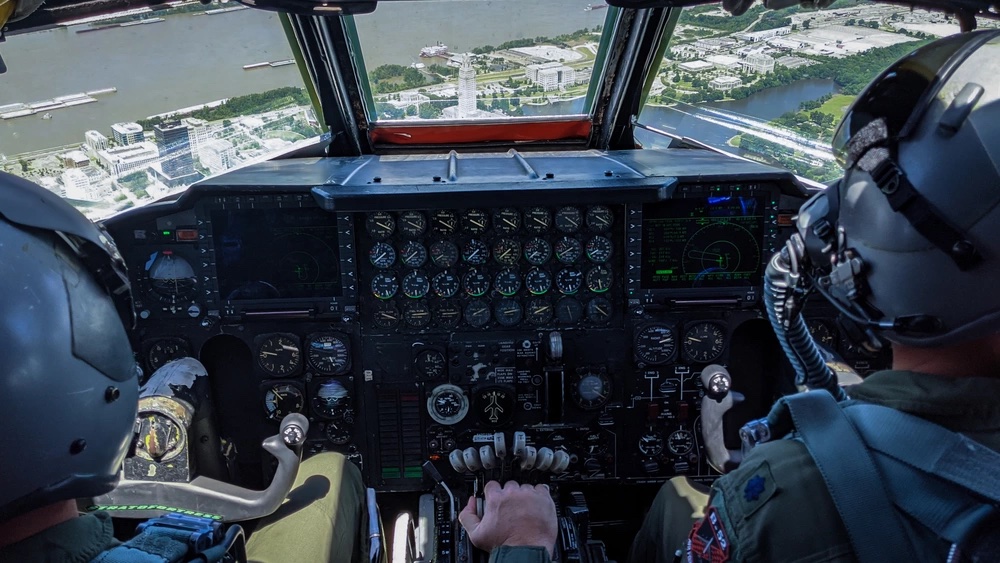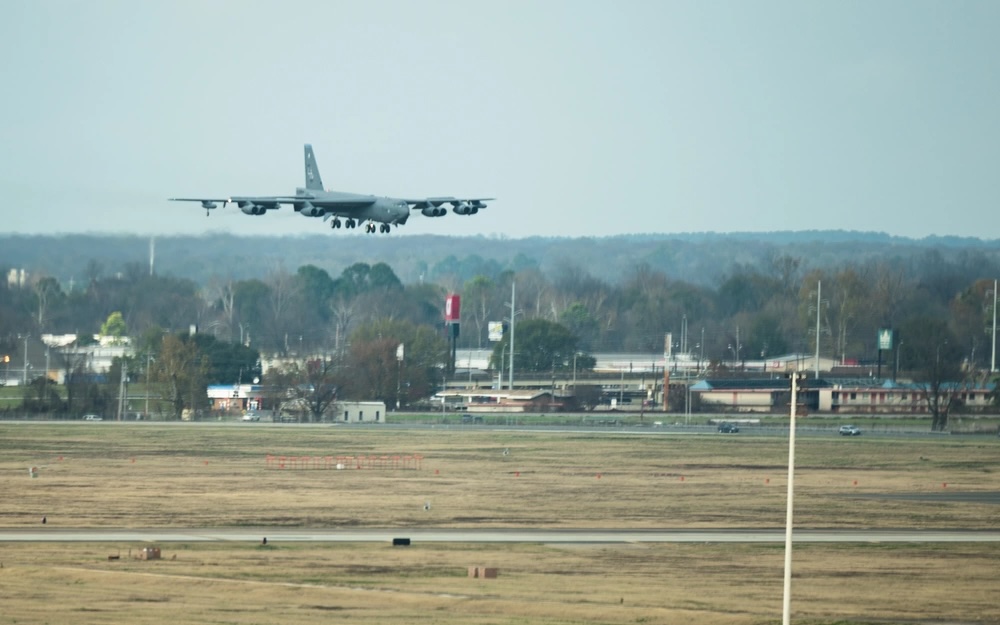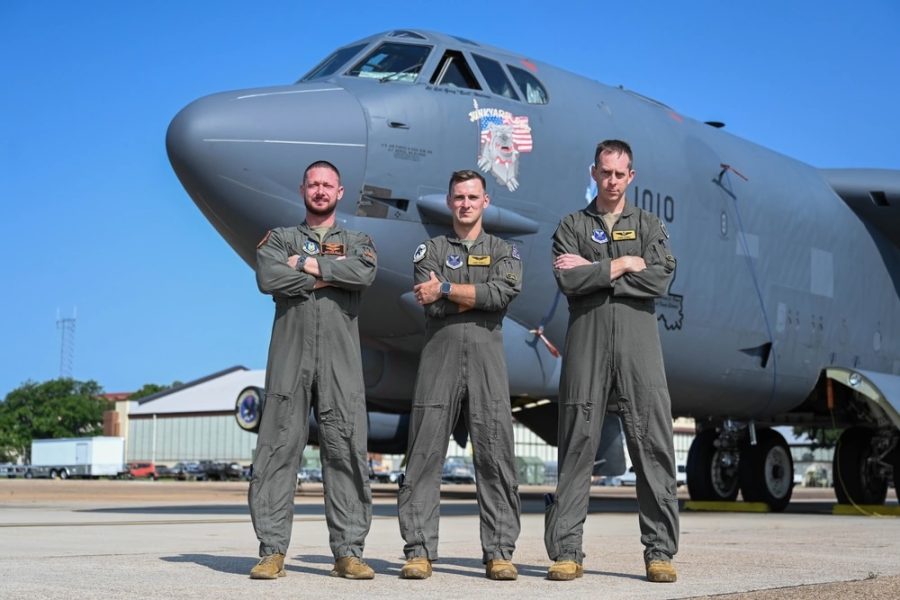Three Airmen were preparing to land their B-52 bomber at Barksdale Air Force Base, La., on Dec. 13, 2022, when the cockpit lights went out and the 185,000-pound aircraft began an uncontrolled left roll.
“The emergency was sudden and caused brief but extreme disorientation to myself and the other crew members,” Capt. Matthew Walls, the copilot, said in a recent press release. “All the systems kicked off at once, and the aircraft went completely dark, engines flamed out, and controlling the aircraft became a battle.”
The next three minutes would decide the fates of the Airmen aboard and of thousands of people living in Bossier City below. The crew, flying under the callsign Scout 94, were returning from Nellis Air Force Base Nev. and dodging severe thunderstorms, a difficult task even when flying a healthy jet, Dave Prakash, a former B-52 operational test pilot and flight surgeon, explained to Air & Space Forces Magazine.
Landing a large, old aircraft requires the focus of the entire crew as they run through their landing checklists and confer with the control tower. When two of the jet’s four electrical generators tripped off, it likely contributed to the “extreme disorientation” the crew felt at the time.
“Trying to troubleshoot when you’re in a critical phase of flight is what’s so disorienting,” Prakash said. “Your mind was focused on this very important task, and now you’ve got to suddenly shift gears, especially when you lose all power in the plane.”

The aircraft commander, Capt. Charles Powell, realized that all four of the engines on the jet’s left side had failed, a perilous situation for a B-52 at slow speed.
The bomber’s eight engines generate thrust that pushes the aircraft forward, Prakash explained. When the engines on the left side of the aircraft stop producing thrust and the right side continues working, the plane turns towards the left, thereby pushing the swept-back right wing almost perpendicular to the airstream, where it generates more lift. Meanwhile, the left wing generates less lift as the plane turns, which makes the aircraft start to roll over.
“If it happened at like 400 knots at 30,000 feet, it would not have been as dangerous and there would not have been such a rapid roll,” Prakash said. “It’s the combination of slow speed and losing the left wing’s power that caused the problem.”
The crew did have one thing on their side: the plane had likely burned off much of its gas during the flight from Nellis to Barksdale and was therefore much lighter than it had been at takeoff, making the bomber more manageable.
“If it was heavy, it would have been a lot harder to control,” Prakash said. “I can’t tell you how lucky they were that they were at landing weight when this happened.”
Over the next three minutes, the crew traded altitude for airspeed, generating enough airflow to restart engines three and four, which reduced some of the asymmetrical load on the aircraft, the press release stated. At 1,200 feet above ground level, the crew regained control of the aircraft, but they still had to avoid bad weather and contend with the jet’s reduced performance as they prepared to land.
Newer aircraft have more automated systems that reduce the workload for the pilot, but the older B-52 requires much more of the pilot’s focus and brain power as he or she wrestles it to the ground, Prakash said.
“When you level off and hit the autopilot button, your IQ goes up like 30 points,” he joked. “But when you’re in the seat in an emergency, all of your cognitive capacity is consumed by controlling the aircraft.”

Luckily, the crew of Scout 94 knew what they were doing. Both Powell and radar navigator Lt. Col. John Conway belonged to the 11th Bomb Squadron, a formal training unit for B-52 air crews. Instructor pilots teach pilots how to handle a wide range of emergencies in countless simulator runs, and part of the training to become a B-52 instructor involves flying a sortie single-handedly, with a safety pilot standing by in the right seat, Prakash said.
“I was very fortunate to have a crew who handled their responsibilities so I could focus on the one thing that mattered in the moment—fly the jet,” Powell said in the release. Conway was equally grateful.
“I believe that the reason Capt. Powell was able to recover the aircraft safely is because he has trained to a six-engine approach many times and holds himself to a high standard when he trains,” the navigator said. “This allowed him to instinctively fan the throttles and not make a bad situation worse by creating more of an asymmetric situation than we had.”
The Airmen put the bomber down safely on Barksdale’s Runway 15, saving an $84 million jet and avoiding a collision with the city below. They recently received Air Force Global Strike Command’s Gen. Curtis E. LeMay award for outstanding bomber crew performance.
“I’m very proud of how we handled the situation,” Walls said. “It was fast and intense, and there wasn’t time for discussion, just action. In my opinion, everyone fell into their role and did what was required.”


